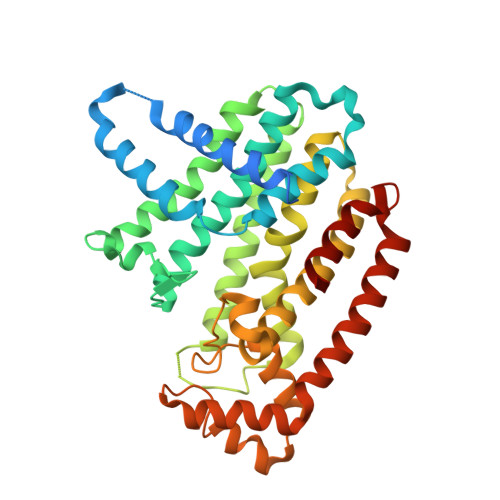Pharmacophore Mapping of Thienopyrimidine-Based Monophosphonate (ThP-MP) Inhibitors of the Human Farnesyl Pyrophosphate Synthase.
Park, J., Leung, C.Y., Matralis, A.N., Lacbay, C.M., Tsakos, M., Fernandez De Troconiz, G., Berghuis, A.M., Tsantrizos, Y.S.(2017) J Med Chem 60: 2119-2134
- PubMed: 28208018
- DOI: https://doi.org/10.1021/acs.jmedchem.6b01888
- Primary Citation of Related Structures:
5JUZ, 5JV0, 5JV1, 5JV2, 5KSX - PubMed Abstract:
The human farnesyl pyrophosphate synthase (hFPPS), a key regulatory enzyme in the mevalonate pathway, catalyzes the biosynthesis of the C-15 isoprenoid farnesyl pyrophosphate (FPP). FPP plays a crucial role in the post-translational prenylation of small GTPases that perform a plethora of cellular functions. Although hFPPS is a well-established therapeutic target for lytic bone diseases, the currently available bisphosphonate drugs exhibit poor cellular uptake and distribution into nonskeletal tissues. Recent drug discovery efforts have focused primarily on allosteric inhibition of hFPPS and the discovery of non-bisphosphonate drugs for potentially treating nonskeletal diseases. Hit-to-lead optimization of a new series of thienopyrimidine-based monosphosphonates (ThP-MPs) led to the identification of analogs with nanomolar potency in inhibiting hFPPS. Their interactions with the allosteric pocket of the enzyme were characterized by crystallography, and the results provide further insight into the pharmacophore requirements for allosteric inhibition.
- Department of Biochemistry, McGill University , 3649 Promenade Sir William Osler, Montreal, QC H3G 0B1, Canada.
Organizational Affiliation:


















